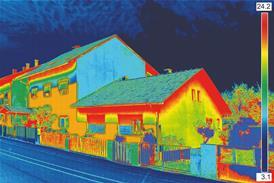Now that we are into installations of ‘fourth generation’ digital CCTV, Pauline Norstrom, a member of the BSIA Digital Recording Systems Working Group, looks at the ability of images to be admitted as evidence in prosecutions
Wherever we look today, things are turning digital at an ever more rapid pace, whether it is the television we watch, the radio we listen to or cameras we take our family snapshots with. The world of security and CCTV is not immune from these changes and naturally this move from ana-logue to digital has been welcomed by many secu-rity installers, given that they are able to specify increasingly capable solutions for their customers.
However this new ‘fourth generation’ digital CCTV technology has also thrown-up some questions which still need to be addressed, most especially the ability of images to be admitted as evidence to support criminal prosecutions.
A new survey by the SIA (Security Industry Association) in the US serves to underline the importance of clarity in this whole area across the globe. Of those involved in law enforcement that were surveyed, 79 per cent said it was “paramount”, and 21 per cent “important”, that digital video images were admissible in court and 97 per cent felt there was a need to establish stan-dards. In all likelihood a survey of the police in the UK, would throw up comparable results.
A question of history
What do we mean by ‘fourth generation’ digital systems? Before focusing on the specific issue of digital evidence, it is sensible to put the latest systems into some sort of historical context. As we all know CCTV really started to make an impact here in Britain in the late Seventies, when what could be called the ‘first generation’ of CCTV systems – extremely basic one-to-one solutions – were installed widely.
Things soon moved on to something more recognisable to today’s installers, with the advent of analogue timelapse recorders. Major improve-ments also came in the form of the video multi-plexer. For the first time a multiplexer, in combina-tion with a time lapse video recorder could switch around all connected cameras. The quality of the information which could be gained was also much improved with the availability of multiple image formats including quad, 8-way and 16-way
Digital first appeared on the CCTV scene with the ‘third generation’ of CCTV systems which featured the earliest digital hard disk recorders and thanks to new hardware innovation – CODEC (COmpressor/DEcompressor) – the transmission of images across telephone networks.
It is only recently though that digital techno-logy has really come of age, with the bringing to market of what have been dubbed ‘fourth generation’ systems. Now large storage digital video recorders and networked based video servers are widely available, combining the functionality of multiplexer, digital recorder and transmission capabilities in one compact unit.
Digital CCTV systems have certainly proved to be extremely popular with installers and end users alike. Some estimates suggest that we are likely to see an increase of sales by roughly a third over the next five years across Europe. There is little doubt that digital systems offer major benefits. Their low cost, high capacity, disk drives can readily cope with recording for as many days as a customer’s Data Protection policy requires. They are also tremendously flexible and economical in operation compared to their more conventional analogue predecessors. Before digital, as many will recall, trying to locate an event often meant a time-consuming and potentially fruitless search through a plethora of tapes.
In addition, a VCR normally used to record images may have had to be used for review, leaving the system unable to gather evidence and the potential to miss critical incidents. This is definitely not the case with digital solutions where live and recorded images indexed by events can be viewed while continuing to record. The latest systems also require less maintenance – no more cleaning of VCR heads – or the need to constantly change tapes.
Breaking with Convention
Sadly, where things become confusing for users is when data actually needs to be stored outside of the hard drive onto another medium like CD or DVD to preserve incidents, as there is no agreed method for ensuring the validity of such material.
Given the history of CCTV, end users, installers, the judicial system and the police have all become accustomed to dealing with tape-based evidence over the past three decades. It is therefore not surprising that there will be a tendency to want to handle digital material in exactly the same manner as the older analogue.
The pressing need for clarity in this area is especially critical given the widespread use of images captured for evidential purposes; the relative ease with which these digital images can be altered, and the variety of authentication solutions offered by manufacturers. It is vital that this situation changes sooner rather than later, so there can be the same confidence in digital media as there is in a VHS tape from a traditional VCR.
Digital video evidence is different, a difference which, if handled correctly, can deliver positive benefits. By their very nature digital images do not degrade, it being perfectly possible to make copies without eroding detail or quality. For the criminal justice system and the police, this obviously requires a change of approach.
With a standard VCR tape detectives had the reassurance of being able to physically touch the original, this was the medium directly recorded to. Not so with digital, as images have to be taken off the hard drive unit, where the original evidence is stored, and copied onto removable media.
With the right verification measures in place, if an incident occurs there really should be no need – as the police may be tempted to do – to take the whole DVR unit away
With the right verification measures in place, if an incident occurs there really should be no need, as the police may be tempted to do, to take the whole DVR unit away. Instead the police should be able to bag and tag the evidence and treat as the CD, for example, as the master copy and then present this to court. It is all about having a verifiable audit trail. If this is not in place then the weight of evidence may be less significant. Effective watermarking can add weight to evidence; allowing images to be authenticated to prove they have not been tampered with.
Standards matter
To date, standards have not been available to deliver definitive guidance in this critical area – not wholly surprising given that digital CCTV is still a relatively young technology. Things are, however, about to change, with a concerted effort through the BSIA to produce a Code of Practice for ‘Digital Recording’ systems, concerned specifically with image review and use as evidence.
Hopefully, when published this should, at least, help to dispel some of the myths regarding the admissibility of digital evidence and provide an invaluable reference point for all interested parties – end users, the criminal justice system and security manufacturers and installers.
The actions we take on this issue in the UK are being closely watched in the US and elsewhere, a fact that was apparent to BSIA representatives at the meeting of the Security Industry Association (SIA) at the ISC West exhibition in Las Vegas. The SIA is also in the process of considering the way forward on digital video evidence.
Those responsible for writing industry standards in America are taking a keen interest in progress on this side of the Atlantic, a point reinforced by the Chair of the SWGIT (Scientific Working Group on Imaging Technology) - created by the FBI to provide guidelines for the use of imaging technologies – which is already looking at guidance produced by our own PSDB (Police Scientific Development Branch).
Where digital video evidence is concerned, it is imperative that there is a standardised authentication process so there can be no question marks regarding whether the images have been altered. As installers will be aware, most manufacturers of DVRs will have their own methods of image verification. Usually this involves a proprietary key, used to verify images, only known to that particular manufacturer and normally packaged in authorised software.
Sadly, this is only as secure as the proprietary key itself. If this is successfully hacked into and unlocked then that protection will evaporate leaving all evidence generated by that method open to being dismissed in court. It is a bit like leaving a key in your front door, allowing a criminal to make a copy of it. The security that your lock gave to your house would have disappeared. So, in the case of software based protection, once the key is known it is possible to alter images, apply another digital signature and have this verified as if it was genuine.
Secure Watermarking
One authentication method which appears to be gaining ground and seems to be the preferred option for the SWGIT (Scientific Working Group on Imaging Technology) in the US is MD5 watermarking. This widely adopted algorithm is analogous to systems used by banks for money transfer. When applied to digital images this type of coding is capable of producing a verifiable audit trail. A unique 128 bit value is generated which represents a Watermark or Message Digest of the contents of the digital data stored in a file. If digital evidence is submitted to the police, on CD for instance, the MD5 watermark data is documented in a Watermark Certificate in the form of a unique 32-character string of letters and numbers. The Watermark Certificate can then be sealed in an evidence bag.
The key advantages of this approach include:
- image data that cannot be altered without detection;
- no need for a digital signature to be added to the image header – as is often the case with other proprietary systems;
- no reliance on a series of software keys which could conceivably be hacked into;
- an ability to verify the authenticity of an image to ensure it has not been changed by running a second MD5 algorithm.
Thankfully, the current confusion surrounding digital video evidence is not insurmountable.
We are working extremely hard at the BSIA to develop and bring in new standards for digital video evidence in the UK, sooner rather than later, and we know that our colleagues across the Atlantic in the SIA/SWGIT are following suit.
When this is publicly available things should become much clearer for you as installers, your customers and crucially the police and courts, in terms of the handling of such evidence and the credence that it can be given in support of criminal prosecutions.
* Pauline Norstrom is Marketing Manager at Dedicated Micros Ltd.
Source
Security Installer




















No comments yet